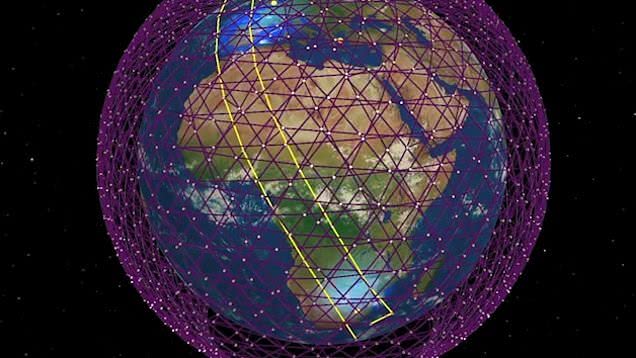Space exploration technology company SpaceX has been busy building its Starlink satellite constellation.
Editor’s note: This article comes from Tencent Technology , reviewing music science.

It is reported that the FCC (United States Federal Communications Commission) has approved SpaceX to launch up to 1 million ground user terminals needed to operate its satellite Internet project.
This approval was obtained almost a year after SpaceX filed a request and is valid for 15 years. The FCC approval was announced in an announcement on March 18, which is a comprehensive license covering the operation of up to 1 million fixed terrestrial signal receiving stations that will work with satellite systems For communication.
SpaceX founder and CEO Elon Musk described the terminals as “looking like a UFO on a stick” and said anyone could easily install the terminals. They have only two basic instructions: plugins and pointing to the sky. (The user terminal will be equipped with actuators to ensure that they always point in the right direction.)
The goal of the Starlink project is to provide global Internet coverage. Currently, we rely on satellites located above the earth to transmit Internet signals or connect them to our homes and businesses through cellular towers and cables. However, these two options are not always effective, and remote and rural areas are often not covered or forced to rely on slow Internet services.
Musk’s goal is to change that. By operating satellite constellations in low-Earth orbit, SpaceX hopes to provide reliable Internet coverage at an affordable price. Initially, small-scale satellite broadband networks will reach 1,584, with the possibility of adding thousands more. So far, the company has received FCC approval for 12,000 satellites and may eventually seekAn additional 30,000 satellites are authorized to be launched.
But this is not the only satellite internet plan. OneWeb and Amazon have similar constellation plans. OneWeb is also a space hardware equipment company. It has launched two batches of satellites, 34 each. It also launched its first six satellites in 2019. Its initial constellation is expected to consist of 650 satellites. However, the company has recently encountered some financial issues. According to a recent report, OneWeb is considering filing for bankruptcy.
Musk has said that SpaceX will need at least 400 Starlink satellites in orbit to achieve “small-scale” broadband coverage and 800 satellites to achieve “moderate-scale” coverage. The service may be rolled out later this year in parts of the United States and Canada, and will soon have global coverage.
Will SpaceX need more user terminals? One million user terminals sounds impressive, but it is not enough to cover all homes in the United States, let alone the entire world. But that’s okay, because Musk said the company is currently targeting the hardest places to reach for traditional telecommunications companies.
The project is not expected to have many customers in major cities because its bandwidth is not high enough. But for those who have not yet enjoyed Internet services, the opportunity to connect to the Internet is crucial. According to a report released by the United Nations in 2018, only about 58% of households worldwide have Internet access.